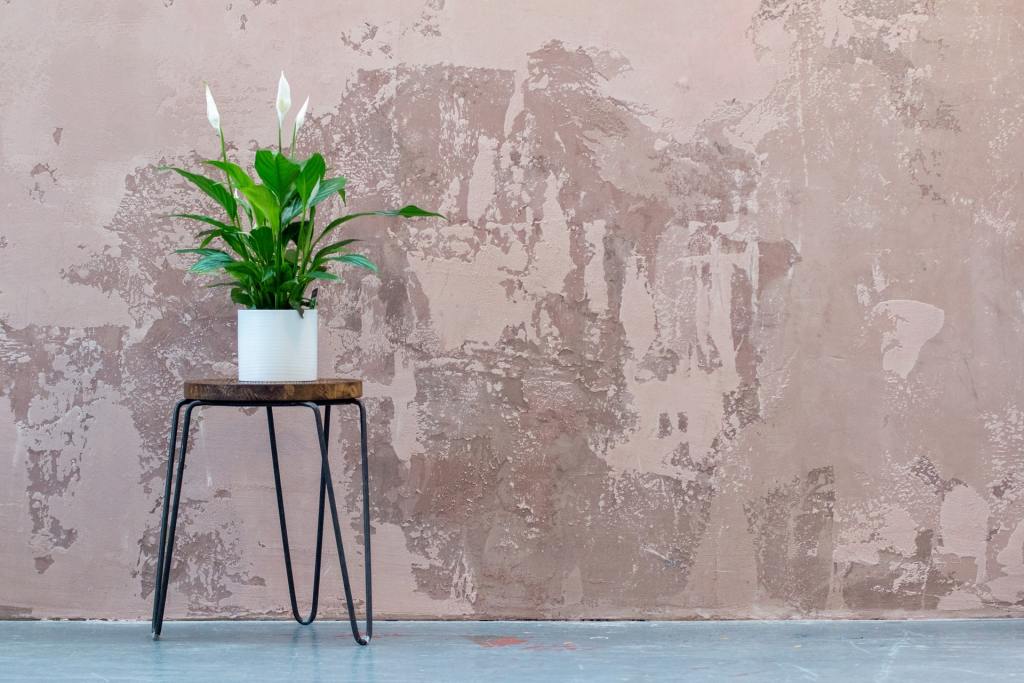The most crucial part of getting a new plant is ensuring that you know how to provide it with the environment it needs to thrive. But, of course, not every plant requires the same care, and although we would consider the peace lily a beginner-friendly plant, it needs more attention than more common houseplants. So let’s dive into what a peace lily is and how to care for it.

What is a peace lily?
The peace lily, or spathiphyllum, is a tropical evergreen native to Central America and Southeast Asia. Although their nickname includes lily, it isn’t a true lily. This part of the nickname comes from their blooms looking like a calla lily. The second part of the nickname is in reference to “the white flag of peace.” These flag-like blooms happen more often when the plant is exposed to a bit of direct sunlight.
The plant can grow up to 16 inches tall when grown indoors, but you can move the plant outside during the summer months. Just remember to bring it back in when winter rolls around.
How to care for a peace lilies
Avoid feeling nervous when you bring your new spathiphyllus home and check out these care tips you can use to provide your peace lily with the best care possible.
Water
The peace lily should be kept moist but never soggy or dry. It’s a pretty drought-tolerant plant and will droop its leaves to let you know it’s getting dry and needs a drink. If the plant experiences excessive dryness, the tips of the leaves will brown.
Light
These are shade-loving plants, and in their natural habitat, they grow on the dark forest floor. To mimic this lighting, place the plant in a spot where it will get medium to bright indirect light. The leaves will burn with direct sunlight, but a mild amount of direct sunlight can encourage your plant to bloom those iconic “white flag” flowers.
Food
Feed your peace lily with balanced indoor plant fertilizer. Apply it during the spring and summer but hold off during those colder winter months when the plant is likely not doing much growing.

Temperature
Temperatures ranging between 60 and 80 degrees are excellent for this plant. However, dramatic changes in the temperature around the plant will damage or even kill it. So avoid putting a peace lily near a vent, drafty windows, and doors.
Humidity
Since this plant is a tropical plant, it will prefer ample amounts of humidity, but it can survive in our homes’ average humidity levels. However, if you want this plant to thrive and live its best life, we recommend putting it by a humidifier or maybe in a bathroom where humidity levels tend to be higher.
Toxicity
The peace lily is considered toxic to both humans and animals, so be sure to put it in a location where smaller humans and furry babies cant reach them. Symptoms that you’ll see if this plant is ingested are extreme drooling, vomiting, or trouble swallowing. In addition, it’s recommended that humans wear gloves when cutting or working with the plant to avoid the sap touching their skin and causing irritation.
Additional care
The most common issue with peace lilies is sudden droopy leaves. While these can be alarming at first, it’s simply the plant telling you that it needs water. You don’t want the leaves to drop every time they need water, so it’s best to water the plant before the leaves droop.
The second most common issue is yellowing leaves. Yellow leaves mean the opposite problem of drooping leaves. It means your plant has been overwatered and is likely suffering from root rot or will be pretty soon. When you see yellow leaves, don’t water the plant until the soil is on the dryer side. We recommend investing in a moisture meter to avoid these often devastating symptoms. This tool will allow you to accurately measure the amount of water in the soil and correctly inform you when you should be watering the plant.
This elegant plant is a joy to grow indoors, and we’re sure you’ll love having it in your collection. Be sure to keep the soil moist and avoid a lot of direct sunlight, and your peace lily will be a happy plant!


